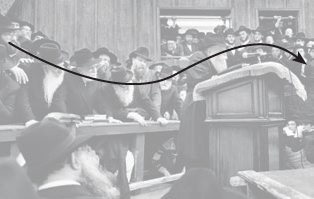
Landscape or portrait
For other examples:
Cristina Garcia Rodero p. 15
Elaine Constantine p. 81
Youngjun Koo p. 96
Dorothea Lange p. 115
It’s not just the lines in your image that dictate how our eyes move across it. The shape (or format) is just as important.
Horizontal pictures (or landscape format) encourage our eyes to move from side to side. Vertical pictures (or portrait format) make them move up and down.
Choosing the format has nothing to do with whether you’re shooting landscapes or portraits. Instead, try to match the format of your picture to the dominant lines – or natural flow – of your subject. This means the shape of your picture and the subject matter will work together to guide the eye in one clear direction.
In this photograph by Marc Asnin the landscape format prompts our eyes to glide from left to right along the undulating line of heads. It’s a busy scene, but the landscape format creates order by drawing out this leading line, which in turn communicates the acute sense of drama.
Look at the Ansel Adams image on page 8 and see how the portrait format accentuates the hanging weight of the monolithic rock face. The gravity of the lines works in tandem with the vertical shape of the image, making our eyes sink from top to bottom.

The Rebbe
Marc Asnin
1992